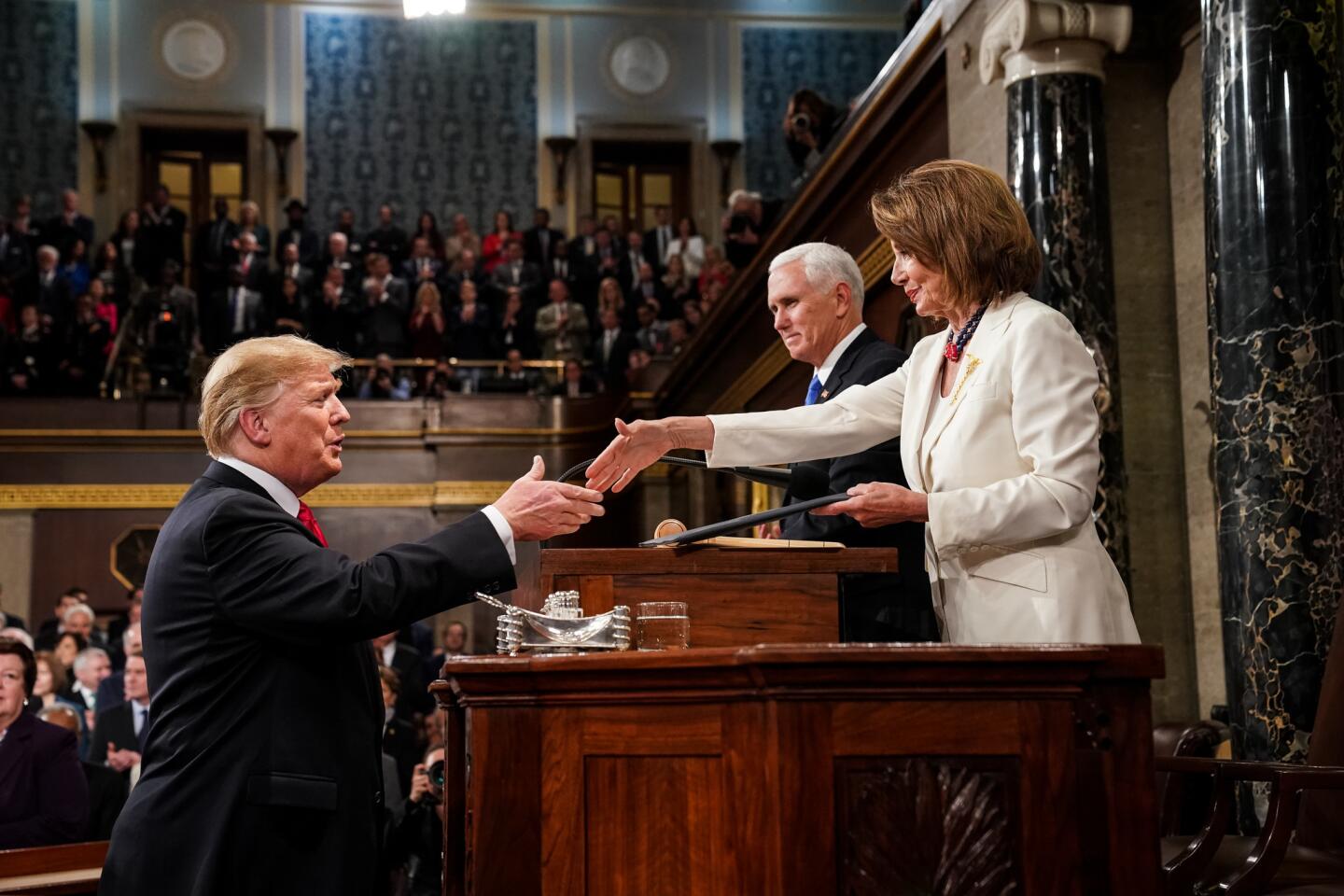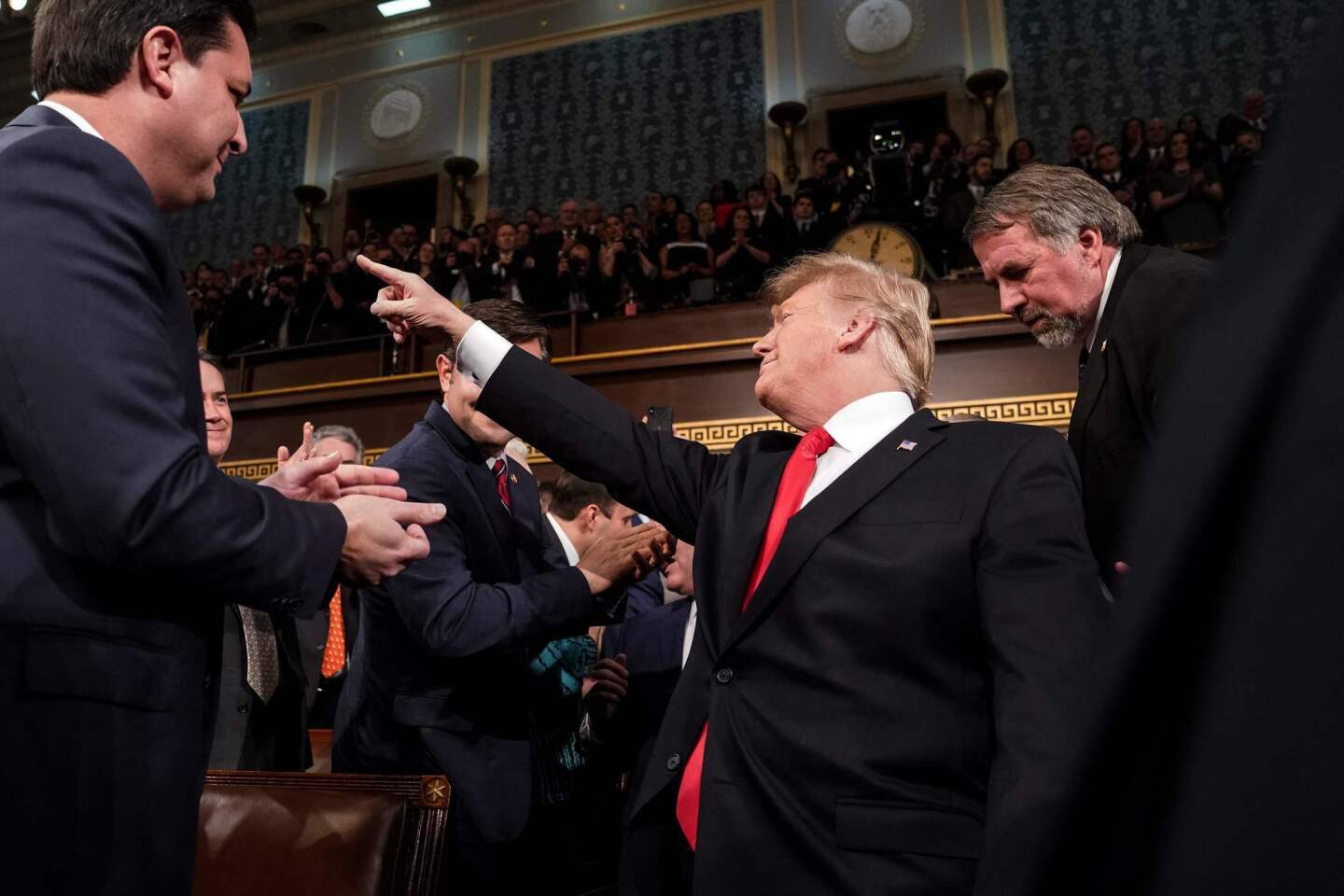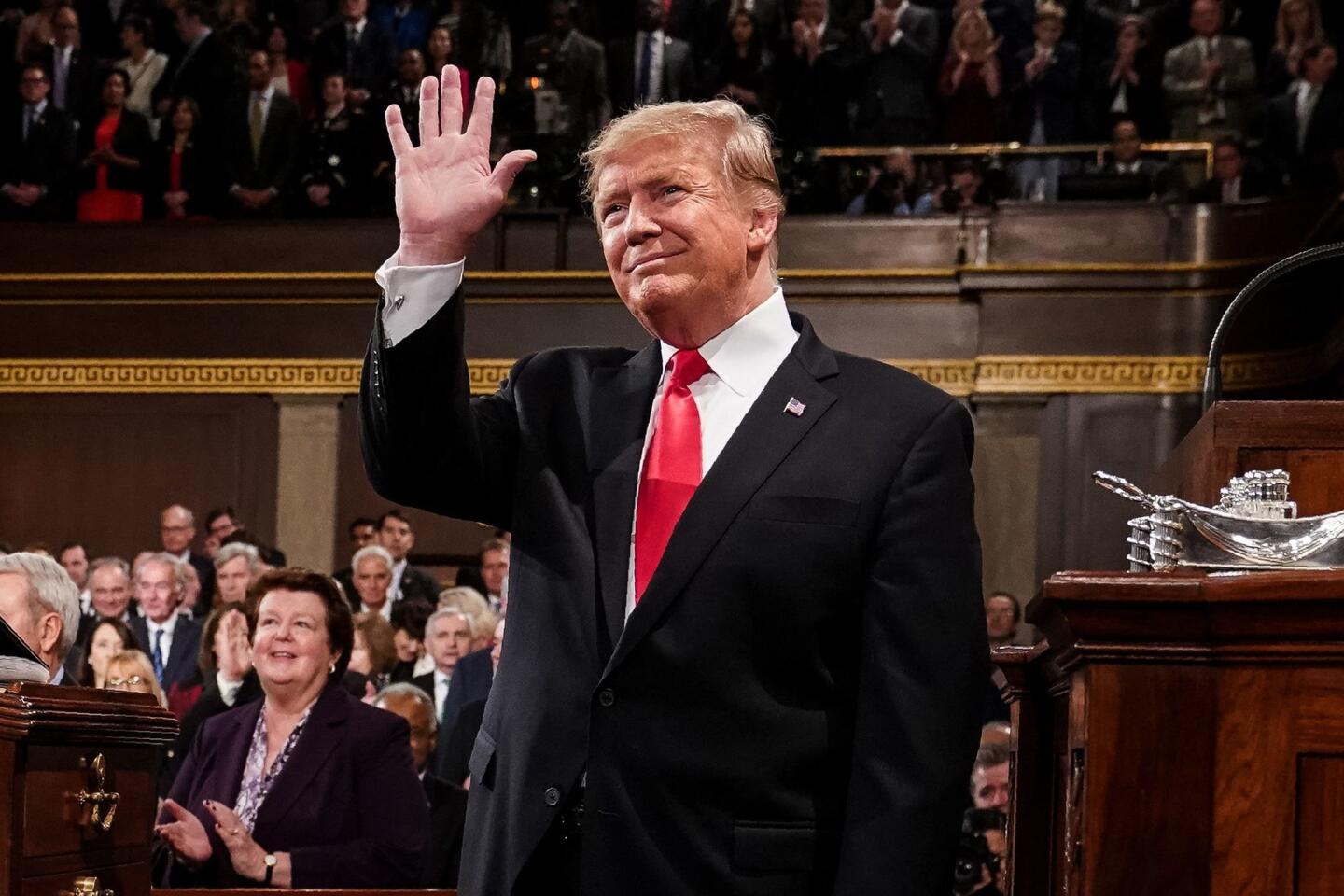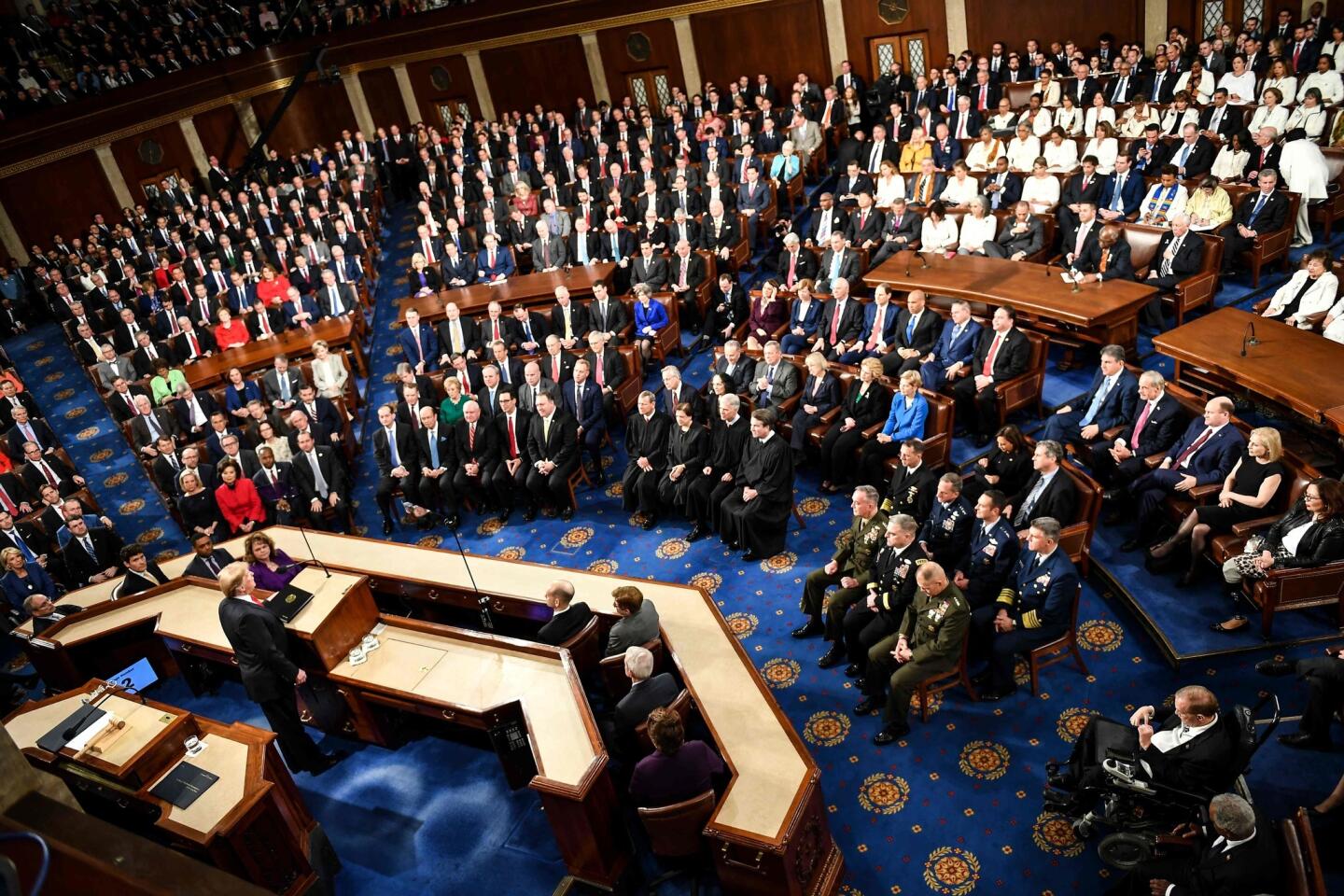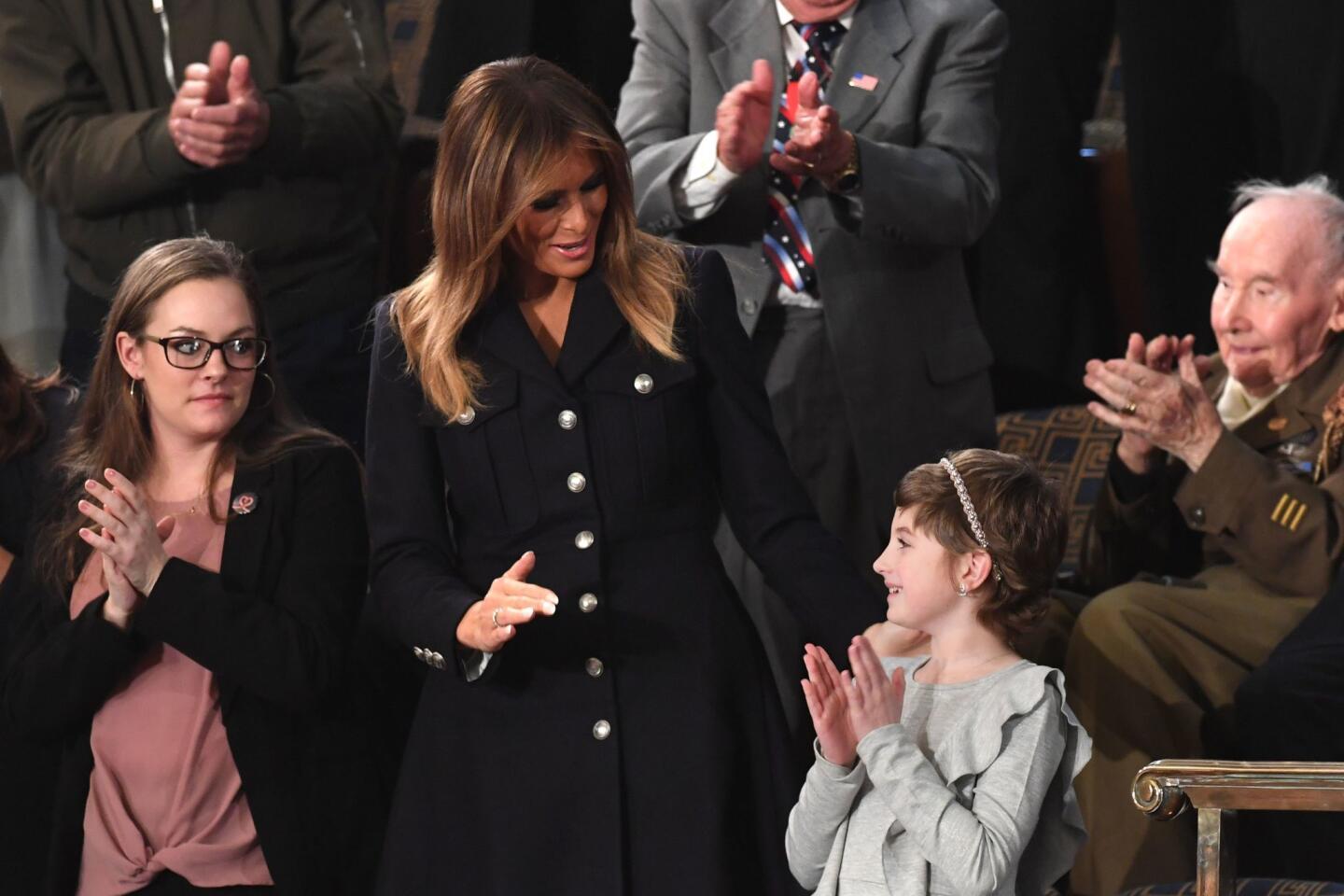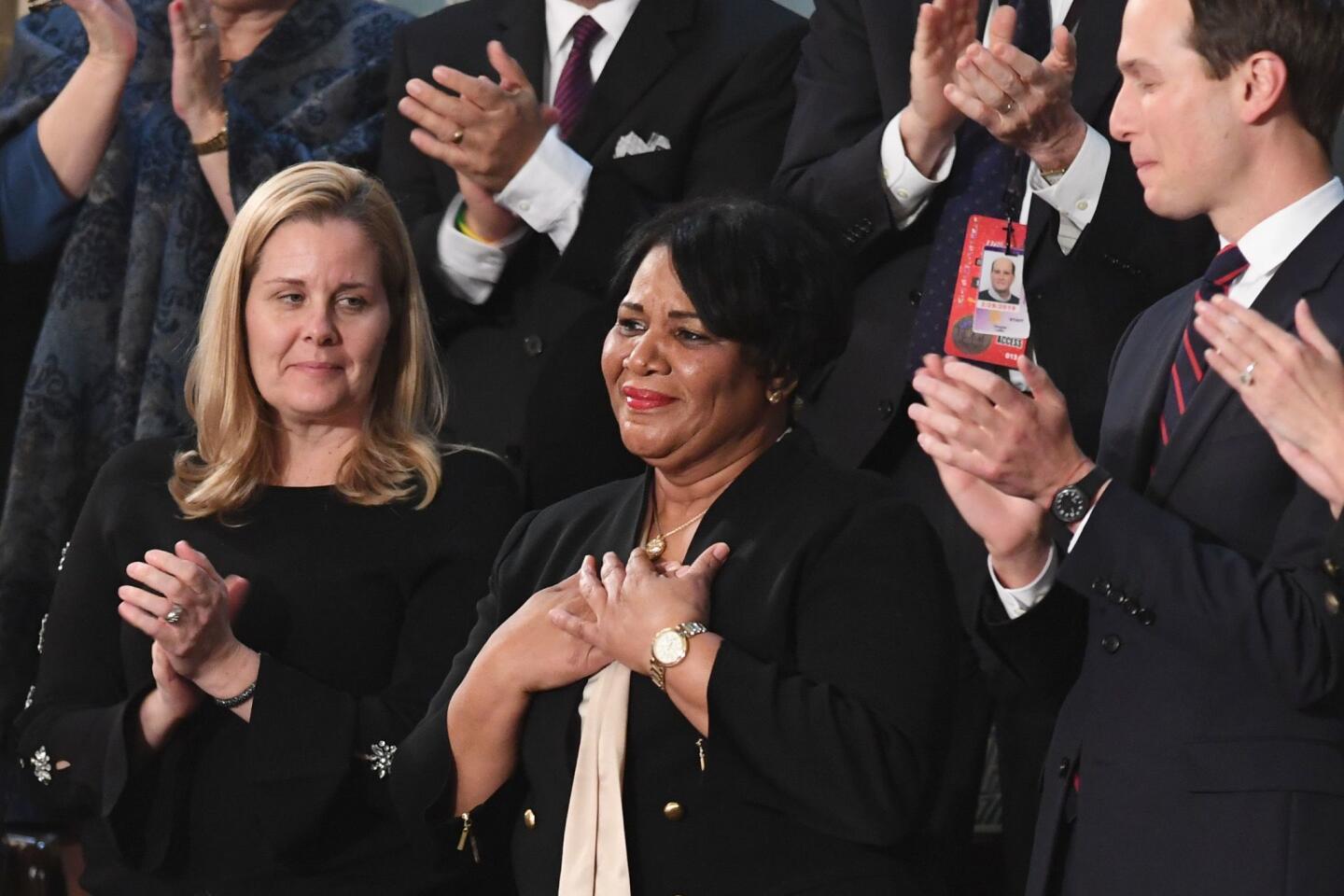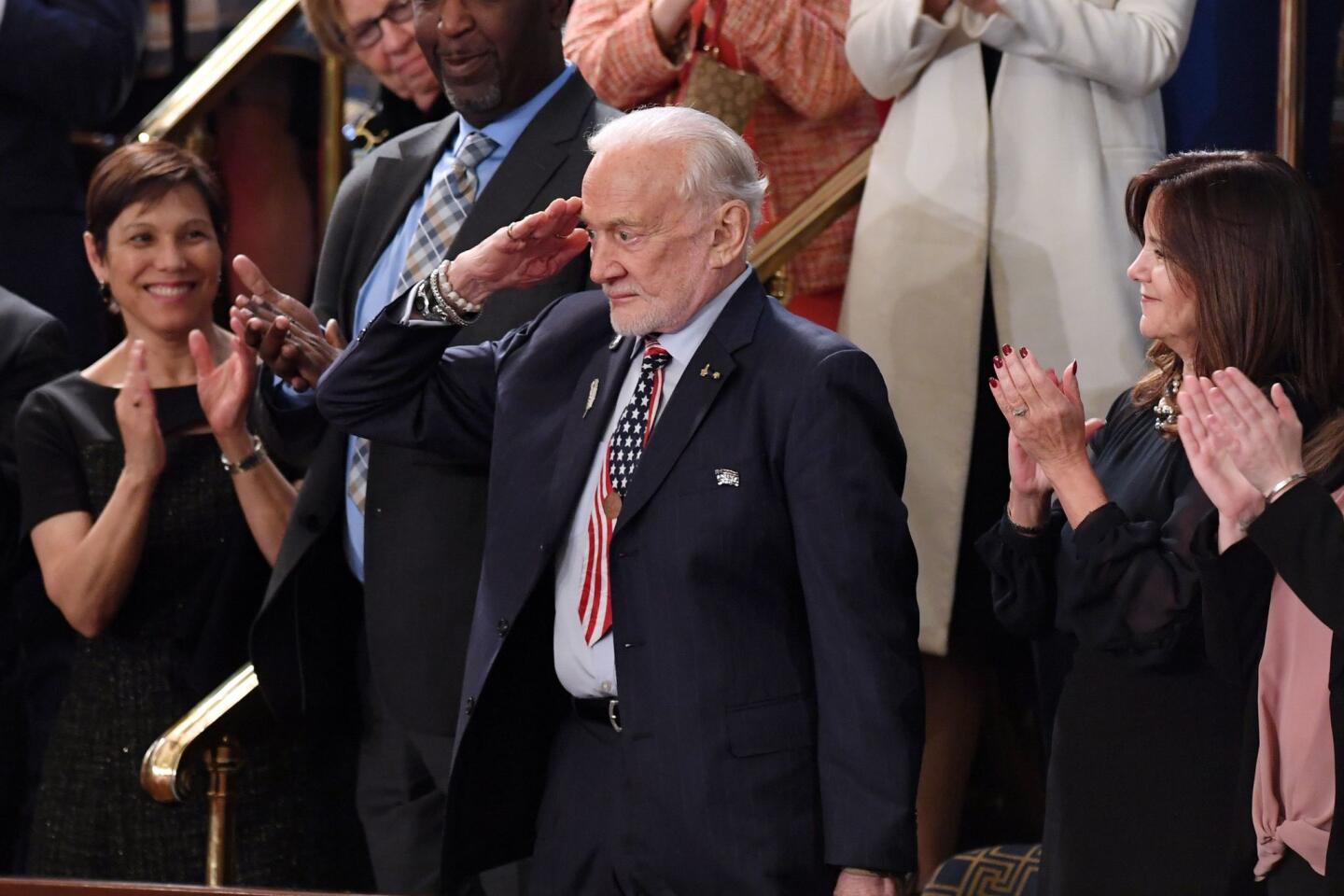One speech, two conflicting missions: Trump revs up his base while reaching beyond it
- Share via
Reporting from Washington — It was an awkward match of man and mission: President Trump aspired to be a unifying political leader Tuesday night in his second State of the Union address, but he was also a candidate for reelection in 2020 whose campaign almost surely will set records for division.
In his 1 hour, 22 minute speech to a joint session of Congress — one of the longest on record — Trump addressed two audiences and tried to accomplish two goals at odds with each other.
Even as he exhorted members of Congress to come together on an agenda of shared legislative interests, he provoked Democrats on immigration, abortion and investigations of his administration.
The pomp and grandeur of the speech gave Trump an opportunity to relish the trappings of traditional power, honoring heroes invited to listen from the House gallery, waxing nostalgic about past examples of American unity in World War II and laying out a long list of proposals, few of which he devoted much time to defending or explaining.
But at the same time, “this is a campaign kickoff speech,” said Scott Jennings, a Republican consultant in Kentucky and former political advisor to President George W. Bush.
It was barely 15 minutes into the address when Trump pivoted from unity to confrontation, attacking “ridiculous partisan investigations” of his administration and saying that the country must choose “peace and legislation” or “war and investigation.”
Immigration was the one topic on which he delivered a sustained argument, but he offered no concessions on his hard-line policies or his demand for a wall along the southern border.
“I will get it built,” he pledged. “Walls work, and walls save lives.”
Judging by the impact of Trump’s past speeches, this address probably did more to inspire his allies than to win converts. Democrats and even some Republicans were skeptical of the call for unity from a polarizing leader who built his political career by provoking adversaries on Twitter and in raucous political rallies.
“He has no credibility on this issue,” said Democrat Mitch Landrieu, the former mayor of New Orleans who is considering a possible run for president in 2020. “He hasn’t walked one step in the direction of national unity. Most everything President Trump has done has been purposely divisive.”
Even some of Trump’s supporters acknowledge that his pugilistic approach can interfere with calls for unity on his part. Andy Surabian, a GOP strategist and former Trump White House official, said that sometimes the president’s personality gets in the way of people seeing potential for cooperation.
“Sometimes because of his style, people forget as a matter of policy there are a lot of areas where Trump can find bipartisanship,” Surabian said.
Tuesday morning, for example, even as the White House was billing the speech as a call for conciliation and cooperation, the president was tweeting criticism of Senate Democratic Leader Charles E. Schumer of New York and issuing an urgent bulletin about the need for a wall — the signature Trump campaign promise that led last month to the longest partial government shutdown in history.
“Tremendous numbers of people are coming up through Mexico in the hopes of flooding our Southern Border. We have sent additional military. We will build a Human Wall if necessary. If we had a real Wall, this would be a non-event!” he said in a morning tweet.
While the bulk of the speech was less pointed in its attacks on Democrats than is typical of Trump, his advisors privately encouraged surrogates and allies to attack Democrats afterward on taxes and abortion.
“If he’s going to go a little high, we’ve got to go a little low,” one said after a pre-speech discussion at the White House for the president’s most prominent supporters.
The speech came as Trump tries to cope with what may prove to be a pivotal moment in his presidency.
In November’s midterm elections, Republicans suffered widespread defeats and lost their majority in the House.
“At this point, the recognition has occurred in the White House that the Republican base is not large enough to win an election,” said GOP pollster David Winston.
Trump was elected with less than a majority of the popular vote in 2016, and has not made a concerted effort to expand his base in the two years since. He is the first president in modern political history to never crack 50% job approval during the first two years of his presidency.
The 2018 midterm elections sent the GOP a blunt message about the limits of the Trump coalition. According to exit polls, Republicans lost among female voters by 19 points and among independents by 12 in congressional balloting.
As he prepared the speech, Trump was still absorbing the implications of his party’s losses. Since then, the Republican position has worsened as Trump absorbs the lion’s share of the public’s dismay over the shutdown.
Trump lost two power struggles with House Speaker Nancy Pelosi, who insisted the government be reopened before negotiating over border policy, and who denied Trump access to the House chamber for his State of the Union address until the government reopened.
In what may have been an oversight, but could also have been a deliberate slight at the beginning of the speech, Trump did not give Pelosi the traditional opportunity to introduce him to the chamber.
The high-profile speech, which Trump agreed to postpone in order to deliver it with all the traditional pomp of the House chamber, gave Trump a chance to regain momentum and to address a broad audience about his agenda for perhaps the last time before the campaign to unseat him in 2020 overtakes the political scene.
One year from now, Iowa Democrats will have held the first presidential caucuses, and California’s ballots will be in the mail to Democrats in advance of the state’s March 3 primary.
The speech was surrounded by Democratic presidential buzz. Sen. Kamala Harris of California gave a response to Trump’s speech via Facebook before he delivered it.
“We’re in store not for a speech that will seek to draw us together as Americans, but one that seeks to score political points by driving us apart,” she predicted.
In the end, the speech contained a little of both, but with different levels of intensity.
Trump advocated at length for the border wall, devoting several pages of his text to what he described as a crisis on the border. By contrast, his olive branches were offered almost in a cursory fashion and on issues of indifference to his hard-core supporters.
Infrastructure, for example, has been on his wish list for years, but did not move an inch in Congress even when it was controlled by Republicans. Despite a pre-speech buildup on the issue, Trump devoted only one paragraph to it, with no new proposals.
But some Republicans are doubtful that Democrats would cooperate with him on any matter, lest it contribute to his chances of being reelected.
“They’ve basically decided that their job in the new majority is to make this presidency irrelevant and make it go away as soon as possible,” Jennings said. “That doesn’t achieve what they think is their highest mission.”
More to Read
Get the L.A. Times Politics newsletter
Deeply reported insights into legislation, politics and policy from Sacramento, Washington and beyond. In your inbox three times per week.
You may occasionally receive promotional content from the Los Angeles Times.
